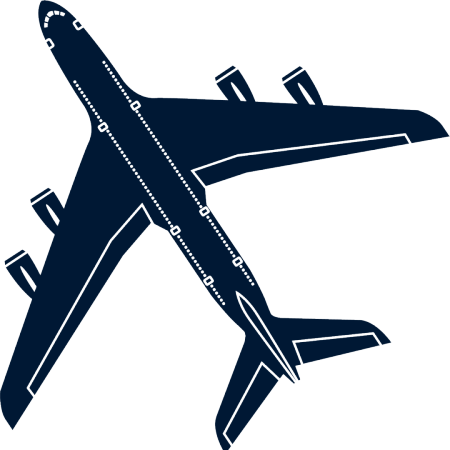Environment
Environmental issues are a priority at Swedavia, and Göteborg Landvetter Airport works continuously in a number of different areas to reduce its environmental impact.
Swedavia's climate work
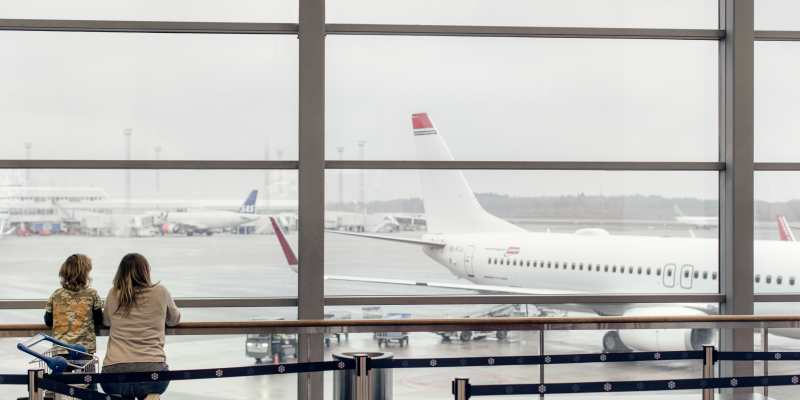
Our zero vision
In 2020, Swedavia achieved the company’s goal of no fossil carbon dioxide emissions from airport operations run under our own management.
Extensive work underpins our success in achieving zero fossil carbon dioxide emissions. We purchase green electricity for all our operations, the back-up power supply runs on hydrotreated vegetable oil (HVO), our vehicle fleet runs on HVO, fossil-free gas or green electricity, and we purchase liquefied petroleum gas (biogasol) and biogas.
Expanded climate work
All of Swedavia’s airports are accredited at the ACA 4+ level in accordance with Airport Council International (ACI) Europe’s standards for the climate work of airports. That means our airports continuously reduce fossil carbon dioxide emissions from their own operations, offset the emissions that have not yet been reduced and help other businesses operating at the airports to reduce their emissions. At the end of 2020, we achieved our fossil carbon dioxide emissions goal for airport operations run under our own management.
The next goal is to have all the airports accredited at the ACA 5+ level, which means that compounds to de-ice runways/aircraft and coolants are to be included in the measurements. We shall also work to a greater extent to engage and work together with other companies and organisations that have significant carbon dioxide emissions at the airports in order to continue reducing emissions together. Over time, all the operations at our airports will switch to renewable energy sources. This work is in line with the International Panel on Climate Change’s goal not to exceed a 1.5 degree rise in global warming as well as Swedavia’s strategy and goals for proactive climate change adaptation.
Facts about Airport Carbon Accreditation (ACA)
- Airport Carbon Accreditation is a framework within Airport Council International (ACI) which evaluates airports' work with handling and reducing their carbon dioxide emissions. The framework has six levels.
- The set certification requirements for ACA4+ includes adapting the airport's handling of carbon dioxide to the Paris Agreement as well as an inclusion of further emission sources in the airport's climate footprint that covers all considerable operational emissions from a third party. The emphasis is on creating effective partnerships with airport actors to reduce emissions. The initiated partnership plan that contributes to the change for the airport's partners as well is a prerequisite for the certification.
- Six of Swedavia's ten airports have been certified at the highest level, ACA5+; Stockholm Arlanda Airport, Göteborg Landvetter Airport, Malmö Airport, Åre Östersund Airport, Visby Airport and Kiruna Airport. The four remaining airports - Bromma Stockholm Airport, Luleå Airport, Umeå Airport and Ronneby Airport - will be certified according to ACA4+ during 2023 and 2024.
- Stockholm Arlanda Airport was one of 17 airports that joined the framework at its start in 2009. Göteborg Landvetter Airport joined in 2010. Both airports were immediatly put in the, then, highest level of the framework, ACA3+ and Swedavia became the first airport concern in the world to become fossil free in their own operation at the end of 2020. Stockholm Arlanda Airport also became the first airport to accept ACI's newly constituted ECO Innovation Award in 2010, a distinction the airport also received in 2021.
Environmental impact

The environmental impact of air transport is crucial to the aviation industry and thus also to the airport. We therefore continually strive to decrease the negative environmental impact from the airport, primarily by reducing greenhouse gas emissions, reducing other atmospheric emissions and discharges to water, and minimising the use of chemicals and the generation of waste.
Do you have any questions regarding our environmental work?
Please contact us on: miljo.got@swedavia.se.
Noise
Swedavia’s goal is to work so that the noise load around Arlanda is considered acceptable relative to the social benefits of aviation and the airport. We make regular noise assessments and measurements to ensure that we are within the scope of our environmental permit. There are conditions in the airport’s environmental permit specifying that homes exposed to the greatest aviation noise must be insulated.
Despite the increase in air traffic, increasingly fewer people are exposed to sound levels exceeding Sweden’s national noise levels. One explanation for the sharp decrease in aviation noise is that aircraft engines are increasingly quieter, a development encouraged by Swedavia. To promote the switch to more modern aircraft, take-off charges are lower for quieter aircrafts.
Curved approaches
One important measure to reduce aviation noise and atmospheric emissions is the continued work to develop the possibility of curved approaches at our airports. Using the new flight path system and curved approaches provides more opportunities to avoid flying over densely populated areas.
Swedavia also works with green approaches. Green approaches reduce noise och carbon dioxide emissions from aircraft.
Cooperation with neighbours is a key element
Working together with neighbours and local authorities is important and has led to construction planning and handling of building permits being carried out based on forecast noise curves. We maintain an ongoing dialogue with our neighbours, and surveys show that the environmental issue given highest priority is climate change, followed by noise.
Air
Atmospheric emissions are also produced by service vehicles in the airport area, in engine test runs, in firefighting exercises and in the generation of district heating used.
Emissions from air traffic
Aircraft engines produce the same kinds of emissions generated in the combustion of all fossil fuels: carbon dioxide, nitrogen oxides, hydrocarbons, soot, particulate matter, carbon monoxide and sulphur dioxide. Sometimes the air at the airport may smell strongly of jet kerosene. What makes it smell like kerosene is sulphur compounds, known as mercaptans, which have a penetrating, intense and characteristic smell in very small concentrations. Sulphur compounds belong to the same group of substances that create odour problems in conjunction with paper pulp production (using the sulphate process). Mercaptans are not toxic in the low concentrations found at the airport.
Swedavia works to shorten flight paths, which reduces fuel consumption and thus also atmospheric emissions. As for Swedavia’s own operations at Göteborg Landvetter Airport, there is always continuous improvement work being carried out.
Modern planes with lower emissions given preference
One way to reduce atmospheric emissions from air traffic is for Göteborg Landvetter Airport to encourage airlines to use modern aircraft that are better for the environment – take-off charges are lower the less nitrogen oxides and hydrocarbons an aircraft’s engines emit. The aim is to motivate airlines with older planes with old engines to switch to modern planes with cleaner engines.
The aircraft’s whirlwinds are not fuel dumping
All aircraft leave whirlwinds in their wake. When the weather is humid, the whirlwinds are visible since condensation is formed from water steam in the air. It may sometimes look like the aircraft is releasing fuel as it lands.
Aircraft very rarely dump fuel and only in an emergency, when a fully fuelled plane needs to make an emergency landing. Only the largest aircraft have the ability to dump fuel. If fuel needs to be dumped, this should take place over water and at an altitude high enough to enable the fuel to be converted into steam before it reaches the earth.
Survey of moss and lichen flora in Härryda
Measurements of air pollutants have been taken at Göteborg Landvetter Airport since 1992. At a number of test sites in Härryda, moss and lichen flora have been studied in order to follow the effects of airborne pollutants and the airport’s potential impact on the surroundings.
The results from the latest survey show, among other things, that in terms of the air quality in the municipality of Härryda, the airport does not play a significant role but rather that the municipality is more greatly affected by major roads, densely populated areas and other factors when it comes to the atmospheric deposition of sulphur and nitrogen.
Soil and water
De-icing of aircraft and runways
Aircraft are de-iced with propylene glycol, and runways are treated with potassium formate to prevent skidding. Potassium formate is a kind of salt and is used instead of urea today since its nitrogen concentration is much lower. Propylene glycol and potassium formate as such have low toxicity levels and break down easily in nature. But this breakdown requires a great deal of oxygen, so the compounds can cause oxygen depletion in waterways and groundwater if large quantities are released. In order to have as small an impact on the water around Landvetter as possible, a number of measures are carried out.
Glycol fluid is recycled after the aircraft’s de-icing
The glycol system is constructed so that run-off is sorted into glycol with a high concentration (more than five per cent) and low concentration (less than five per cent). The high-concentration is conveyed to the airport’s own facility where it is heated to produce a liquid with 50% glycol. The liquid is sent to a recycling facility where up to 99.5% pure glycol is produced. The recycled glycol can be mixed with new de-icing fluid for airports or used as a component in other glycol-based products. This is a great environmental benefit since it reduces the need for fossil materials.
The low-concentration glycol is conveyed via an oil separator to the airport’s treatment facility and its three surface water ponds. The function of these ponds is mainly to process organic material, nitrogen, phosphorus, potassium and heavy metals in the water. Since glycol consumes oxygen when it breaks down, pumps are used to provide oxygen.
There are regular checks of the water in accordance with a water control programme.
PFOS
Background
Perfluorinated substances have been used for about 50 years in surface finishes of textiles, cleaning agents, kitchen utensils and firefighting agents as well as to coat food packaging, for example. PFOS (perfluorooctane sulfonate) is one of the most widely known substances and has been used for firefighting foam, among other things. In recent years, it has been found that PFOS can be harmful to animals. There may also be a risk of it being harmful to humans, although no such harm has been identified so far. We all have some level of PFOS in us from the food we eat and sometimes from different chemical products that enter our system in a different way. PFOS can therefore be measured, for example, in our blood.
PFOS in West Ingsjö Lake
Elevated concentrations of PFOS have been identified in water and fish from West Ingsjö Lake and in water from East Ingsjö Lake. There is a high probability that this can be connected to the firefighting exercise site at Göteborg Landvetter Airport, where firefighting foam containing PFOS was used in the 1990s for firefighting exercises. The firefighting pond has now been emptied and decontaminated, but since PFOS breaks down slowly, there can still be elevated concentrations in the environment and in fish.
PFOS research project
A research project on PFOS in the environment was conducted over a five-year period. The RE-PATH project is aimed at investigating and mapping the presence, spread and risks of PFOS to people and the environment and at exploring potential measures for perfluorinated substances around Göteborg Landvetter Airport and elsewhere. The project is funded by Swedavia and the Swedish Environmental Agency and is being conducted by IVL, Svenska Miljöinstitutet AB. It has been concluded from the project that adults can eat fish caught in West Ingsjö Lake up to 7 times a month without exceeding the established benchmark level. Following the precautionary principle, women who are pregnant or breast-feeding are advised not to eat fish from the lake.
Annual report for the research project (in Swedish).
Medical/ecological survey
At the request of Göteborg Landvetter Airport and the environmental management organisations in the municipalities of Härryda and Mölndal, VMC (Västra Götalandsregionens Miljömedicinska Centrum), a unit at Sahlgrenska University Hospital, investigated whether PFOS in fish led to a measurable increase in concentration in the blood serum of nearby residents who eat a lot of fish from the lakes in question.
Comparisons were also made with control groups of people from different areas as well as of people living in the same areas who have not eaten such fish. An assessment was also made of the risks of any effect on people’s health.
The conclusion was that there was no such risk, and two reasons were given. First, the people studied had lower intakes of PFOS than the EU considers to be a risk-free level. Second, the people in the study have much lower levels than groups who, for example, are or have been exposed to PFOS in their work without it having been possible to determine that there was any effect on their health.
Measures at the airport
Since 2008, the airport has treated the most contaminated groundwater at its firefighting exercise site. In 2010, a permanent facility was set up to prevent the further spread of PFOS from the airport. Surface water and shallow groundwater that pass through the contaminated area are collected in a lined trench and conveyed to two reinforced ponds for further treatment in a carbon filter facility intended to clean water contaminated with PFOS. In 2017 the carbon filter facility was expanded so that it consists of a series of carbon filter columns for more effective treatment. After the water is cleaned, it is conveyed to the airport’s surface water ponds. In 2011, all firefighting vehicles at the airport were decontaminated. After the decontamination work was completed, a new fluorine-free firefighting foam was introduced, Moussol 3/6-FF, in firefighting vehicles. The new foam forms carbon dioxide and water when it is broken down.
National PFOS regulations
National Swedish PFOS regulations entered into force on June 27, 2008. The new regulations entail a ban on the use of PFOS and on substances that can be broken down into PFOS in chemical products and goods. There are some exceptions, which are not limited in time, for certain applications in the photolithography and photography industry, in chrome plating and in hydraulic fluids for aviation.
Waste management
All waste from Swedavia’s facilities is sorted. However, the amount of household waste is growing due to the increased sale of take-away food. This waste is divided into four categories: waste for recycling, for energy recovery, landfill waste and hazardous waste. Our goal is for the share of landfill waste to decrease with a corresponding increase in the share of waste for recycling. At the airport, there is a waste and recycling station, waste sorting sites, a compost facility and a facility for handling hazardous waste.
Environmental permit
The authority that issues permits is the Land and Environmental Court. Various detailed conditions formulated by the Court are often attached to the permit. The conditions are mandatory and may result in legal action if they are not fulfilled. Large-scale changes in operations that are not covered by the permit in effect, or that do not fulfil or correspond to the conditions in effect, require a review of the permit or a review of individual conditions. Smaller changes covered by the permit must be reported to the so-called regulatory authority. The County Administrative Board has oversight responsibilities for the airport based on the requirements in the Swedish Environmental Code. Examples of changes that require reporting are replacement of solid fuel boilers, changes in chemical management or changes in a de-icing area.
The Land and Environmental Court’s decision can be appealed in the Land and Environmental Court of Appeal at the Svea Court of Appeal, which is the court of last resort for cases that originate with the County Administrative Board. The Swedish Supreme Court is the court of last resort for cases that originate in the Land and Environmental Court.
Double permits
Airports are subject to permits from two different authorities, one from the Swedish Transport Agency and one from the Land and Environmental Court. The Swedish Transport Agency has overall responsibility for civil aviation in Sweden and is tasked with promoting safe, cost-efficient and environmentally-safe civil aviation.
The Land and Environmental Court is responsible for ensuring that airport operations are designed to comply with environmental laws in effect. A balanced assessment is made taking in account various interests in society and the intentions of the Swedish Environmental Code. Airport operations may thus not be carried out if one of these permits is missing.
Landvetter introduces new environmental permit
On January 1, 2021, Göteborg Landvetter Airport started using the new environmental permit it obtained in 2016. The airport thus has a more modern permit which allows smarter approach paths and covers the need for air travel in the years ahead.
Read more here
Questions and answers about the environmental permit (in Swedish)
Land and Environmental Court’s ruling, June 17, 2015 – PDF (in Swedish)
Svea Court of Appeal’s ruling, April 28, 2016 – PDF (in Swedish)
Environmental report
Flight path system
Göteborg Landvetter Airport placed a new flight path system in service in January 2009. Using new technology known as P-RNAV, air corridors have been narrowed. The flight path system places the airport at the very cutting edge in terms of environmentally-smart approach routes. That means aircraft fly over fewer densely populated areas and homes. The flight path system, which the airport was given the green light for in Environmental Ruling M 118-01, allows environmentally smarter approaches when aircraft land, with less engine thrust. That in turn produces less noise for people living in the vicinity and lower carbon dioxide emissions.
Summary of the system
In brief, the flight path system allows landing aircraft to navigate along more advanced routes. Paths have smarter routing relative to built-up areas and are designed as a sloping plane. Aircraft thus fly at a higher altitude for a longer period and have a more fuel-efficient landing approach. This is a radical difference compared to more traditional flight paths, which were developed using older airway beacons. With its new technology and new flight paths, the airport is well equipped to safely and efficiently meet the requirements from the surrounding area to reduce the environmental impact.
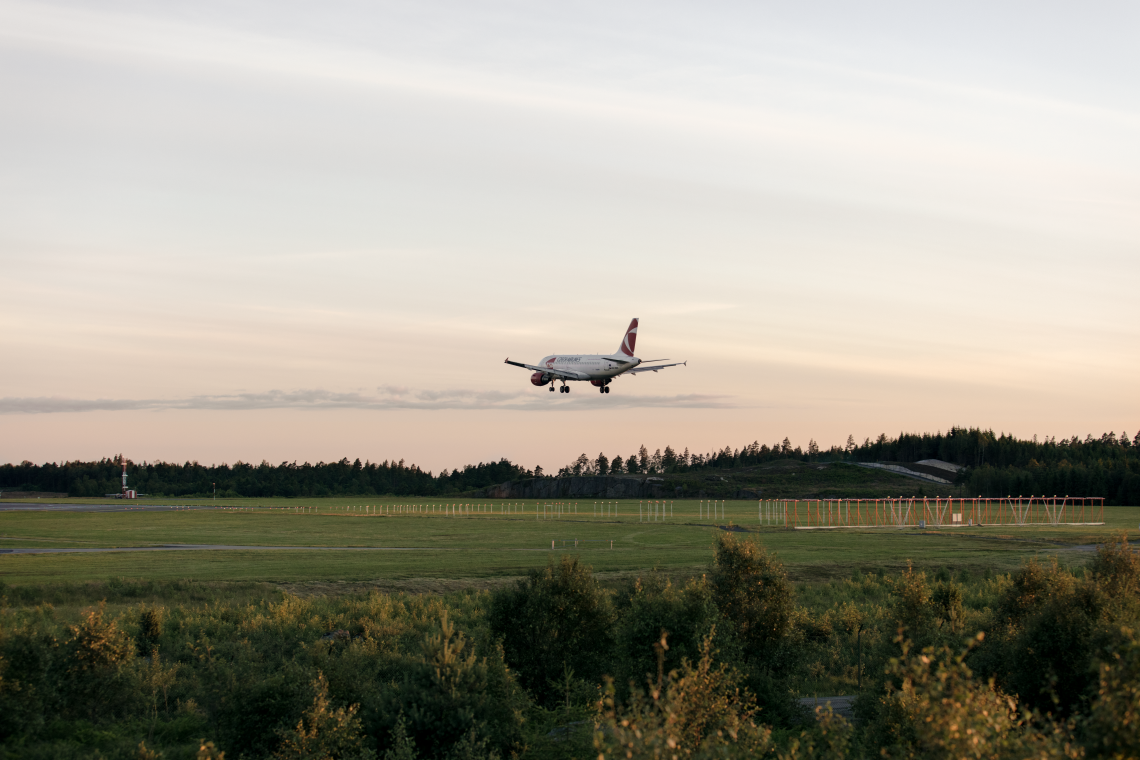
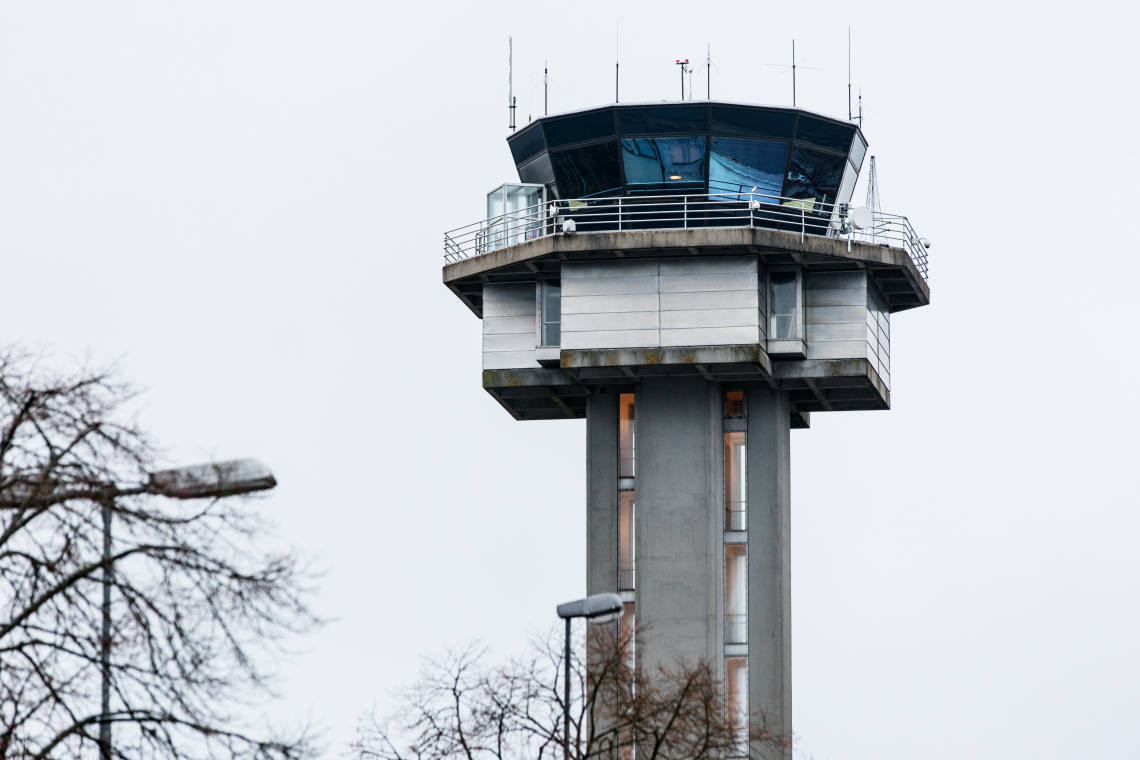
Air traffic controller and pilot plan approach together
Since the aircraft’s computer is in continuous contact with equipment on the ground, the entire flight is adjusted to the exact landing time. It also means that the air traffic controller and pilot together plan a stabilised approach – the aircraft glides instead of descending stepwise, as is currently the case. This kind of approach is estimated to save an average of 150 kg of fuel and 450 kg of carbon dioxide emissions per flight. These environmentally smart approaches also mean that noise is reduced in the vicinity of the airport since the aircraft does not need to use jet thrust at lower altitudes.
Complex procedure to plan flight paths
Planning environmentally smart flight paths is a complex procedure. There are many factors to take into account, which can in fact be contradictory – something that reduces noise can increase emissions. Other factors to keep in mind are, of course, maintaining safety and minimising the number of people affected. When flight paths are created, the airport wants to subject as few people as possible to noise but also find the shortest path possible to keep emissions down. The new flight path system has created an opportunity to take everyone involved into consideration.
Green flights
The aim of green flights is to reduce the environmental impact of air traffic and coordinate environmentally-relevant measures in air traffic management (ATM). This is in order to reduce noise and emissions in Swedish air space.
The Green Flights project involves, among other aspects, green approaches, green take-offs, green cruising och EcoFlying. The project was launched by the Swedish civil aviation administration (LFV)’s air traffic management in 2007. The focus is on activities related to air traffic management that reduce greenhouse gas emissions and noise during every phase of a flight. Airports and airlines both play a major role, so they are therefore represented on the project’s project coordination committee and in the sub-project EcoFly.
Green flights involve:
- Green approach
- Green departure
- Green cruising
- EcoFlying
- Performance-based navigation (PBN) study “Green” business case
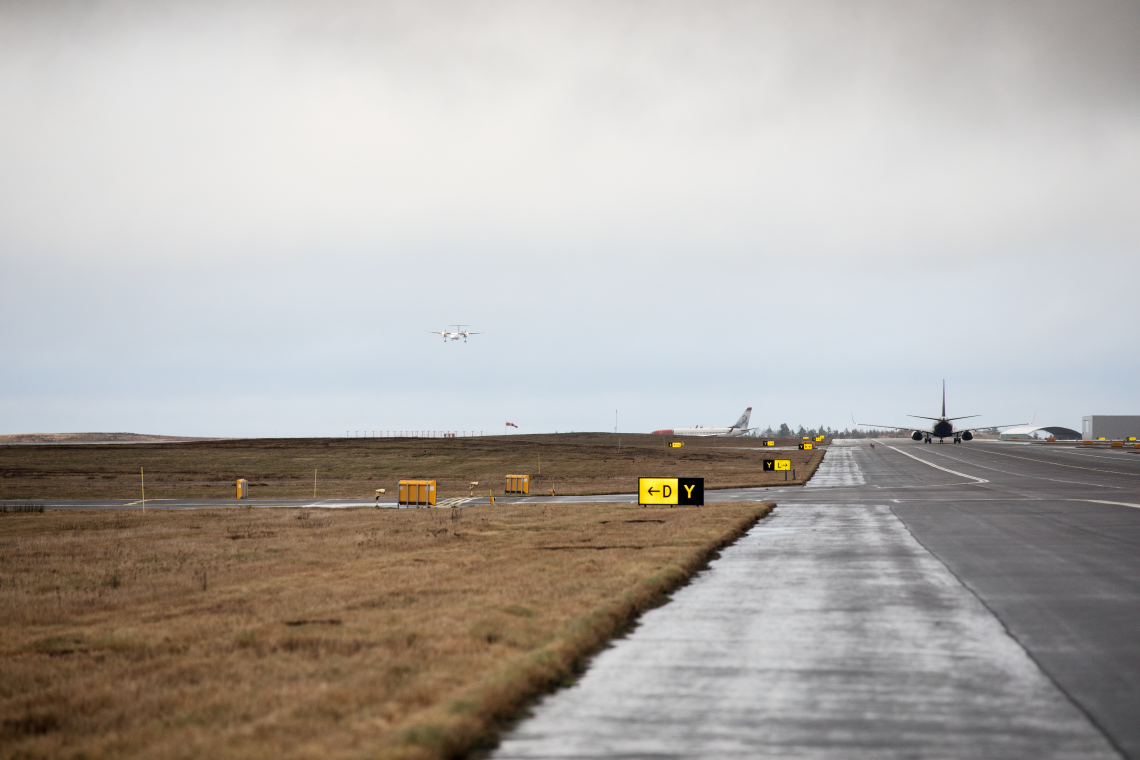
How I work for the environment
I work for clean waterways

I work with water, which may not be something people initially associate with an airport. But because we have really large areas at an airport, a lot of water is collected here. My colleagues and I work to minimise the environmental impact that water can have both in the airport area but also when it continues to flow from there. We do this in part by treating surface water in our surface water ponds – three ponds covering a total of five hectares.
There are chemical residues containing organic material in the surface water from the airport which are produced when we de-ice aircraft and use anti-skid treatment on the landing runway. These organic compounds use oxygen when they break down. Oxygen is therefore added to the water in a natural way using aerators, which ensures that the water has good oxygen content when it leaves the area. This is done to avoid any negative impact on these natural waterways, where all living organisms need oxygen.
At the airport, we also have a treatment plan that treats PFAS. PFAS are organic substances that are hard to decompose. It was previously used in fire extinghuishing foam which was used here. Swedavia works actively to investigate, map and prevent the spread of PFAS.
We continually measure what the water quality is like, in the water entering the ponds and the water leaving them, but also in a number of other waterways at the airport and in the vicinity. Water samples are taken downstream from the area and from waterways not affected by the airport’s surface water in order to have a reference point in assessing water quality.
My job is really fun and varied. Since the environment is an integral part of all of Swedavia’s operations, my colleagues and I handle a lot of different issues and get to work with different departments. It's very informative!
I work for the future of aviation
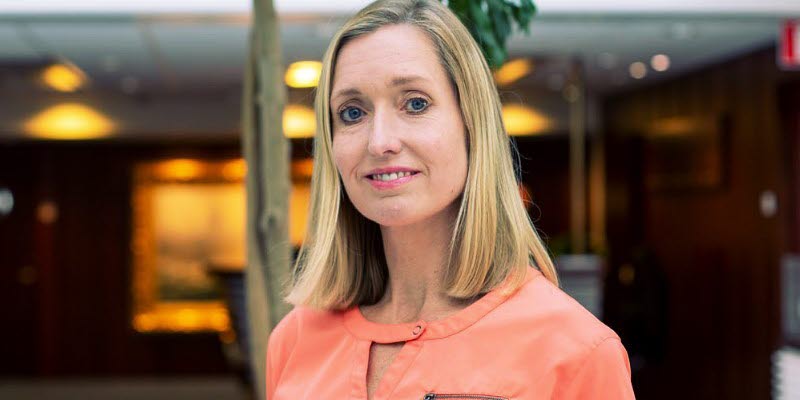
In my job as environmental manager at Göteborg Landvetter Airport, it is my responsibility to make sure we reduce our own greenhouse gas emissions at the airport. Furthermore, we work with other operators – airlines, ground handling companies and other technical experts in the industry – to reduce the overall environmental impact of aviation. We are part of an industry that must work together to achieve the climate strategy goals set by the industry, including fossil free aviation by 2045. Swedavia reached the interim goal to be independent of fossil fuels in its own operations by year-end 2020. The next step is that all all airport operations are fossil free by 2025. This means that all actors at our airports become independent of fossil fules.
In concrete terms, this can involve being more efficient when a plane is on the ground, for example, having an electrical connection instead of a diesel generator for aircraft when they are parked. It can also involve creating more efficient and shorter flight routes or flying with Sustainable Aviation Fuel (SAF).
We want to make it possible for people to meet and for countries to exchange goods and services, then as things stand we are dependent on efficient air traffic. This is the sustainability principle we must work by – we have an impact and we must reduce this. At the same time, we must contribute so that other values such as employment, income for the tourism industry and business world, and social development can continue to develop.
In a broader perspective, it is incredibly important that we are part of collective, global air transport.
Sweden has come a long way in regards to environmental issues, both internationally and nationally. As a State-owned company, we must ensure – as part of our mission – that we actually are a world leader on environmental and sustainability issues too. To drive these issues in a company that is a role model for many other organisations, that's a lot of fun!
